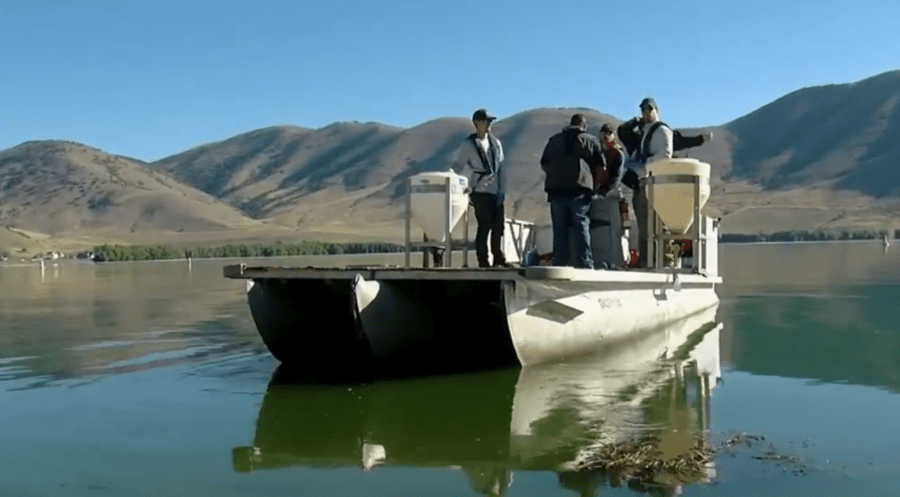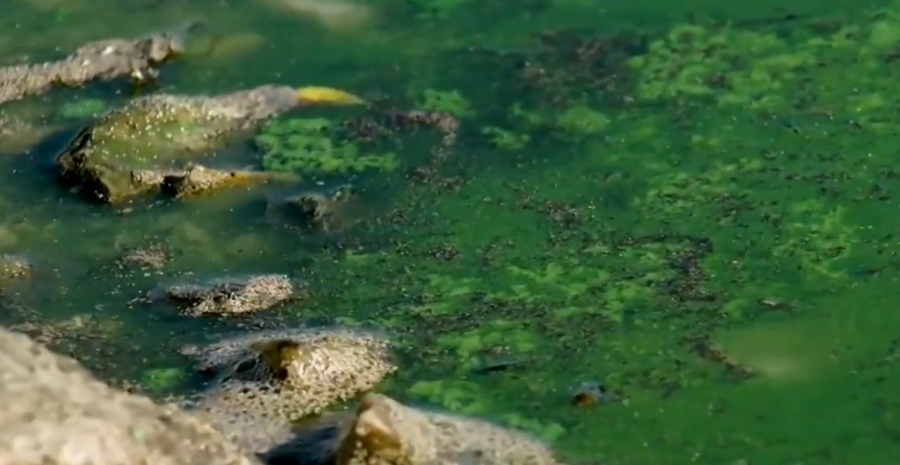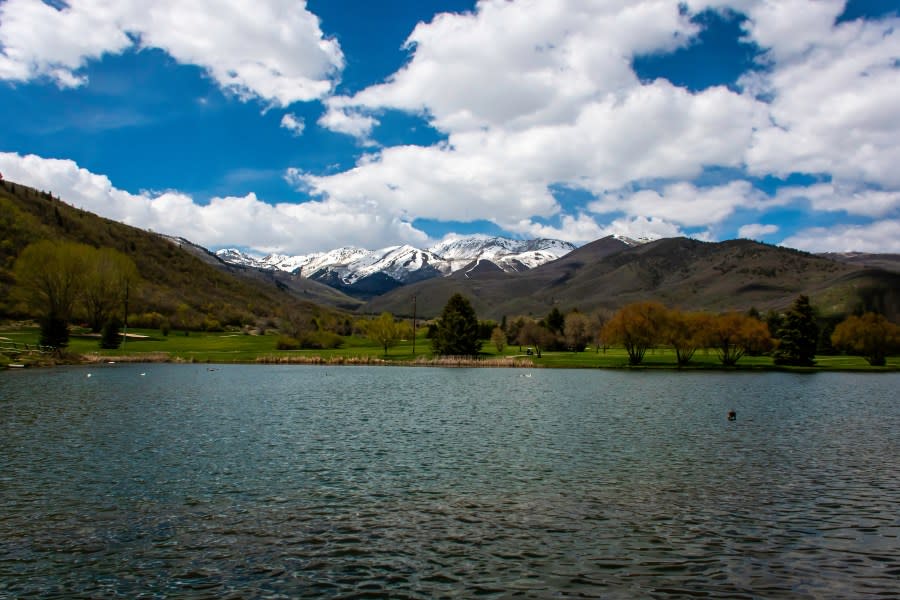Algal bloom treatment worked for Mantua Reservoir, but could it come to Utah Lake?

BRIGHAM CITY, Utah (ABC4) — For the last several summers, toxic algal blooms have plagued Mantua Reservoir, covering the northern Utah lake with thick, green muck and keeping locals from enjoying days out on the water.
In September, BlueGreen Water Technologies treated an algal bloom in the reservoir in partnership with Brigham City, which owns the reservoir and uses the water for irrigation.
“We did the treatment on Monday morning, and by Thursday you could visibly see a significant improvement,” said Jan Spin, BlueGreen’s president of the Americas.

The company is now considering a much larger treatment project on Utah Lake, the third-largest freshwater lake this side of the Mississippi River. A meeting on the topic is slated for this week, and as it currently stands, local officials have reservations about the idea.
Mantua Treatment
The treatment in Mantua was a proof-of-concept test for BlueGreen, and Brigham City didn’t pay a dime for participating. BlueGreen wanted to show they could clear the lake of harmful algae while reducing the cost of treatment by selling the generated carbon credits on the market.
“The results came in, and we’ve certified the sequestration of just under 13,000 tons of carbon,” Spin said, noting the treatment has the potential to be a powerful tool in the fight against climate change.
Cami Sabin, a spokesperson for Brigham City, said the treatment at Mantua Reservoir went according to plan, with local officials noticing an immediate improvement in water clarity.
“Overall, we were very happy with the results of the algal bloom treatment and we plan to purchase supplies to complete a smaller-scale maintenance treatment later this summer or fall,” she said in an email.
Utah Lake
BlueGreen is hoping to treat other bodies of water in Utah. According to Spin, the company has been eying Utah Lake, a large, shallow body of water near Provo that’s historically suffered from toxic algal blooms.
Luke Peterson, executive director of Utah Lake Authority, said that a meeting with BlueGreen is slated for Wednesday, May 15, but he expressed concerns about the feasibility of treating a body of water the size of Utah Lake.
“We’re 172 times the size of Mantua, which is pretty significant,” he said.
Addy Valdez, a conservation biologist with Utah Lake Authority, said that while algal treatment might be something of a silver bullet solution for a reservoir, it won’t likely solve algal bloom issues on Utah Lake without significant investment and treatments year after year.
Fish die-offs and harm to wildlife were another concern, especially with the amount of treatment that would be needed for Utah Lake. Peterson said he’d heard about fish die-offs in Mantua Reservoir following the BlueGreen treatment.
Sabin, with Brigham City, said the Mantua Reservoir experienced a fish die-off in the days following the treatment. However, she noted that 10,000 trout were planted in the lake around that time, and the number of fish that died was consistent with other fish plantings.

“Due to the timing, it’s impossible to know exactly how much the fish were impacted by the treatment versus typical stress that occurs when they are planted in a new environment,” Sabin said.
Tests at the time showed lower levels of dissolved oxygen in the water, she said, but the levels bounced back to normal within a few days.
A spokesperson for BlueGreen said the drop in dissolved oxygen was caused by the fish stocking, not the company’s treatment, which uses hydrogen-peroxide to make algal colonies self-destruct and sink to the sediment.
“The algaecide is delivered via a timed-release, floating method, which allows it to target the toxic species where they’re concentrated without hurting other aquatic life or bleaching out aquatic plants or ‘good’ algae or organisms,” the spokesperson said, in an email. “The treatment ultimately breaks down into water and oxygen molecules; we don’t pump chemicals into the water (as is the case for some of the other treatment protocols out there).”
Spin noted that while BlueGreen has only treated four bodies of water in the United States, the company has treated hundreds of bodies of water across the globe, as it operates in Israel, Asia, and South Africa. None of these treatments, the company said, have been linked to adverse impacts on fish or aquatic life.
“We’re really excited about the results we’ve achieved in Mantua,” Spin said. “We hope that we can carry forward this program in future mediation projects in Utah and elsewhere.”
For the latest news, weather, sports, and streaming video, head to ABC4 Utah.

